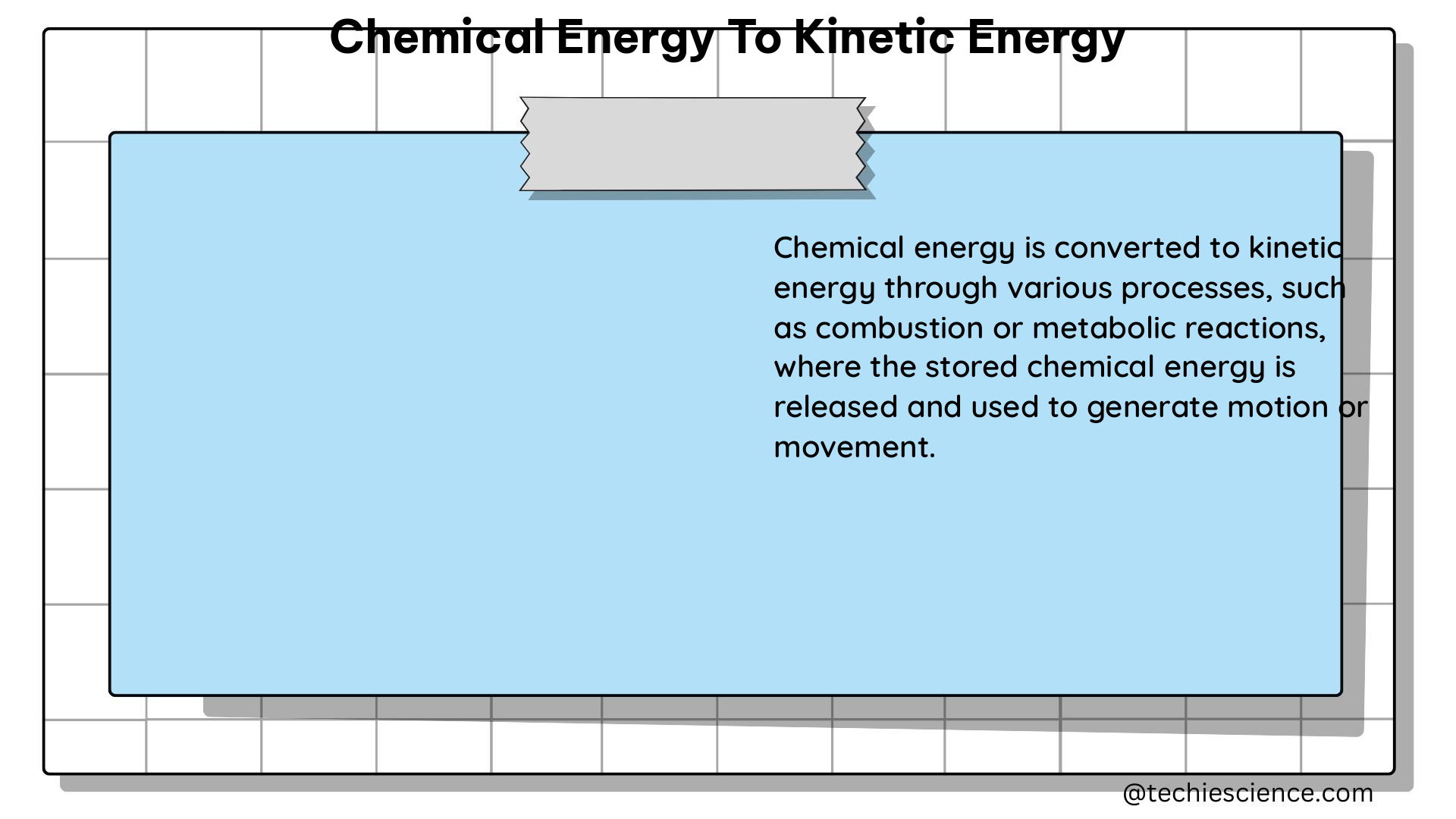The conversion of chemical energy to kinetic energy is a fundamental process in thermodynamics that plays a crucial role in various physical and chemical phenomena. This process is governed by the laws of thermodynamics, specifically the first law, which states that energy cannot be created or destroyed but can be converted from one form to another.
The Kinetic Molecular Theory of Gases
The kinetic molecular theory of gases is a fundamental concept in chemistry and physics that explains the behavior of gases. According to this theory, gas particles are in constant motion and possess kinetic energy due to their motion. The kinetic energy of gas particles is directly proportional to the absolute temperature of the gas, as expressed by the equation:
where E is the kinetic energy, m is the mass of the particle, and u is the speed of the particle.
The distribution of molecular speeds in a gas is described by the Maxwell-Boltzmann distribution, which shows the number of molecules with a given speed at a particular temperature. The most probable speed (ump), average speed (uav), and root-mean-square (rms) speed (urms) are important parameters that characterize the distribution of molecular speeds. These quantities are related to the temperature and mass of the gas molecules and can be calculated using the following equations:
where k is the Boltzmann constant, R is the gas constant, T is the temperature, and M is the molar mass of the gas.
Example: Calculating the rms Speed of CO₂ at 40°C
To calculate the root-mean-square (rms) speed of CO₂ at 40°C, we can use the following equation:
where:
– M = 44.01 g/mol (molar mass of CO₂)
– R = 8.314 J/(mol·K) (gas constant)
– T = 40 + 273.15 K (temperature in Kelvin)
Substituting the values, we get:
Therefore, the rms speed of CO₂ at 40°C is approximately 421 m/s.
Thermochemistry

Thermochemistry is the study of the energy changes that occur during chemical reactions. The energy changes during a chemical reaction can be measured using various techniques, including calorimetry. Calorimetry is a technique that measures the heat absorbed or released during a chemical reaction or a physical change.
The energy change during a chemical reaction is often expressed in terms of the enthalpy change (ΔH) of the reaction. The enthalpy change is the difference between the enthalpy of the products and the enthalpy of the reactants. The enthalpy change can be calculated using the equation:
where ΔH is the enthalpy change, n is the stoichiometric coefficient of the species, and Hf° is the standard enthalpy of formation of the species.
Example: Calculating the Enthalpy Change for the Combustion of Methane
To calculate the enthalpy change for the combustion of methane (CH₄), we can use the following equation:
Therefore, the enthalpy change for the combustion of methane is -815.6 kJ/mol.
Technical Specifications
The technical specifications for the conversion of chemical energy to kinetic energy and the measurement of enthalpy changes are as follows:
- Kinetic Molecular Theory of Gases
- Gas particles are in constant motion and possess kinetic energy due to their motion.
- The kinetic energy of gas particles is directly proportional to the absolute temperature of the gas.
- The distribution of molecular speeds in a gas is described by the Maxwell-Boltzmann distribution.
-
The most probable speed, average speed, and root-mean-square speed are important parameters that characterize the distribution of molecular speeds.
-
Enthalpy Change (ΔH)
- The enthalpy change is the difference between the enthalpy of the products and the enthalpy of the reactants.
- The enthalpy change can be calculated using the equation: ΔH = ∑nHf°(products) – ∑nHf°(reactants).
- The enthalpy change can be measured using calorimetry.
Example Problems
- Kinetic Molecular Theory of Gases
Calculate the root-mean-square speed (urms) of nitrogen gas (N₂) at 25°C.
Solution:
where M = 28.01 g/mol (molar mass of N₂), R = 8.314 J/(mol·K) (gas constant), and T = 25 + 273.15 K (temperature in Kelvin).
Substituting the values, we get:
Therefore, the root-mean-square speed of nitrogen gas at 25°C is approximately 515 m/s.
- Enthalpy Change (ΔH)
Calculate the enthalpy change (ΔH) for the combustion of propane (C₃H₈):
C₃H₈(g) + 5O₂(g) → 3CO₂(g) + 4H₂O(l)
Given:
– Hf°(C₃H₈(g)) = -103.8 kJ/mol
– Hf°(CO₂(g)) = -393.5 kJ/mol
– Hf°(H₂O(l)) = -285.8 kJ/mol
Solution:
Hi…I am Keerthana Srikumar, currently pursuing Ph.D. in Physics and my area of specialization is nano-science. I completed my Bachelor’s and Master’s from Stella Maris College and Loyola College respectively. I have a keen interest in exploring my research skills and also have the ability to explain Physics topics in a simpler manner. Apart from academics I love to spend my time in music and reading books.
Let’s connect through LinkedIn